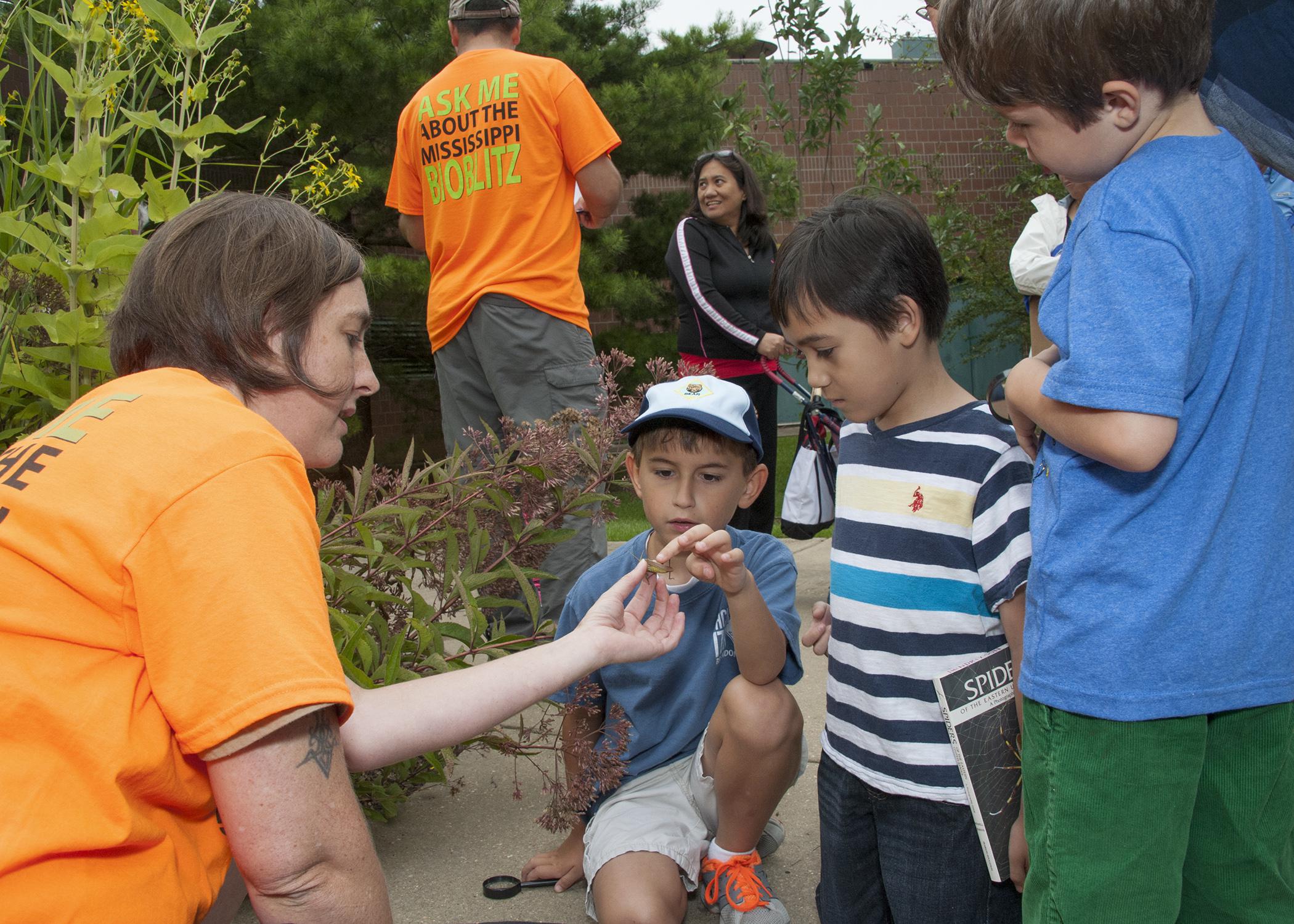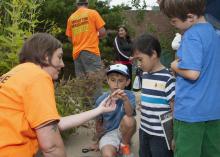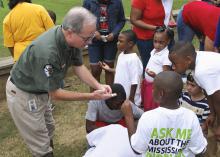Information Possibly Outdated
The information presented on this page was originally released on September 15, 2014. It may not be outdated, but please search our site for more current information. If you plan to quote or reference this information in a publication, please check with the Extension specialist or author before proceeding.
BioBlitz helps inventory ecosystem, teach public
JACKSON -- More than 130 students, teachers and community members combed the grounds of the Mississippi Museum of Natural Science in Jackson on Sept. 13 during the state’s first BioBlitz.
Scientists from the Mississippi State University Extension Service and the museum led participants through the facility’s trails during the 13-hour event to inventory insects, spiders, birds, aquatic animals, mammals, trees and mushrooms.
“We were looking for a fun, interactive way to educate the public about Mississippi’s natural resources,” said Jason Gordon, assistant Extension professor in the MSU Department of Forestry. He is also a specialist in urban and community natural resource management with the university’s Forestry and Wildlife Research Center.
For participants, the event provided an opportunity to learn about the local ecosystem and to gain an appreciation for it.
“So often we pass by these things without noticing them,” Gordon said. “But all of these plants and animals play an important role in nature. It is essential for us to recognize how each of these things fits into the ecosystem and how we impact them, positively or negatively. Only then can we understand how to maintain an environment that is healthy and beneficial to all living things, including humans.”
The event also helped museum scientists record the variety of species present, said Matt Roberts, director of museum collections.
“This helps us tremendously,” Roberts said. “It is important for us to know what species are present. We keep a database for study and sharing. If we find something new or exceptional, we can add it. Over time, it will show us how the ecosystem might change.”
Barbara McCain, a member of the Mississippi Homeschool Association, brought her son Joseph for the hands-on learning experience.
“There is nothing like getting into the field,” McCain said. “My son loves science, and this is a wonderful opportunity for him to interact with his environment and see the things we study in our lessons. But even if a child isn’t on fire for it, something like this can spark an interest they didn’t know they had. It’s also a good way to learn what plants and animals to avoid.”
Jameson Clancy got an unexpected treat on the way to LeFleur’s Bluff State Park for a nature hike.
“We were on our way to the park so Jameson could complete an assignment for school,” said Jameson’s mom, Dawn Clancy. “And my husband saw the sign for the BioBlitz, so we decided to check it out. We’re glad we did. Jameson loves this kind of thing, and it will help him complete his project.”
Participants identified 239 species during the event. Some of the species identified included golden silk spiders, spiny orb weavers, thread wasted wasps, white-tailed deer, raccoons, Mediterranean geckos, skinks, snakes, blue herons, Carolina chickadees, wood ducks, Eastern phoebes, rusty blackhaws, silverbelles and paw paws.
“Despite the cool, cloudy weather that deterred many invertebrates and birds from coming out of their shelters, we were very pleased with our first BioBlitz,” Gordon said.
A second BioBlitz will be held at the Natchez Trace Parkway Visitor Center near Tupelo on Oct. 4. For more information about this event, call Gordon at 662-325-8851.
Gordon said he plans to make the BioBlitz an annual event for both Jackson and Tupelo.
BioBlitz events are also held in national parks across the country each year. For more information about these events, visit http://www.nationalgeographic.com/explorers/projects/bioblitz/.






